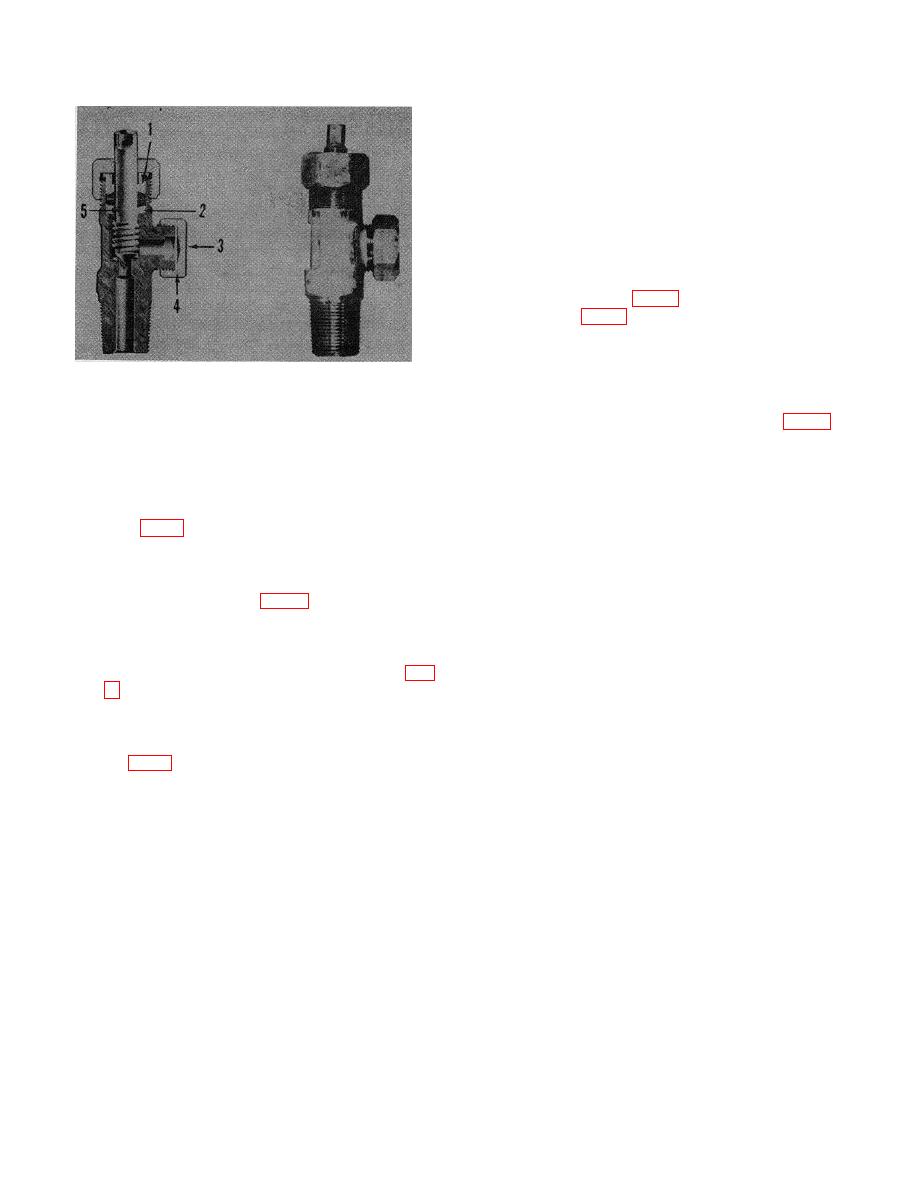 |
|||
|
|
|||
|
Page Title:
Figure 5. Chlorine lnstitute valve for 1-ton |
|
||
| ||||||||||
|
|
 b. Type D. The type D 1-ton container is used to
ship and store chemical agents that are either liquid or
gaseous at atmospheric pressure. It is identical with the
type A container except for the inside diameter of the
eduction tubes and eduction tube outlets as described
below.
(1) Eduction tubes. The inside diameter of
the eduction tubes in the type D container
is 1 inch.
(2) Valves.
One-inch Chlorine Institute
valves (fig. 5) or one-inch angle valves
outlets. Angle valves are used only in
containers under low internal pressure.
Chlorine Institute valves are used in
containers under high pressure.
1 Packing gland
2 Packing ring
3 Cap
substitute for types A and D and can be filled with any
4 Gasket
type of liquid or gaseous chemical agent.
It is
5 Stem
approximately the same size as the types A and D and
Figure 5. Chlorine lnstitute valve for 1-ton
has the same capacity. It weighs 900 pounds empty
container.
compared with the 1,600-pound empty weight of types A
and D. The type E container is a closed cylinder, 30
bonnet fig. 3) is fastened over the valves by three
inches in diameter, made of 9/32-inch steel. Protective
bonnet clips and a bonnet-locking clip.
housings (11 and 5) welded to the front and rear ends of
the container project beyond the front and rear heads.
(2) Eduction tubes. Two 1/2-inch inside diameter
The overall length of the type E container is 82 1/2
steel eduction tubes (fig. 4) extend into the
inches.
container from the front head. Either eduction
tube can be used for emptying or venting the
(1) Front head. The front head is a convex dome
container.
welded to the front end of the container. Two
eduction tube outlets (6), 14 inches apart, are
located in the front head.
Each outlet is
cap (3) fitted with a gasket (4) covers the valve
threaded to receive a 1-inch valve (1). Three
outlet when the valve is not in use.
tapered plugs (10) are screwed into 3/4-inch
(4) Valve-opening wrench. A valve-opening wrench
holes spaced equally around the outer edge of
(1, fig. 2) is used to open and close the valves.
the front head. The plugs will blow out when the
It is attached to one of the valves when the
internal pressure becomes too high. Fusible
container is being transported or stored.
plugs are installed when the container is filled
(5) Rear head. The rear head of the type A 1-ton
with chlorine; nonfusible plugs are installed
container is of the same construction as the
when it is filled with other chemical agents. A
front head, but the rear head has no eduction
circular protective cover (9), bolted to the front
tube outlets and no shipping bonnet or bonnet
protective housing by
clips.
(6) Identification. The front rim of the container is
marked with the nomenclature of the container,
the water capacity in pounds, the drawing
number, serial number, lot number, the symbol
of the agent in the container, and the date the
container was tested.
AGO 9020A
3
|
|
Privacy Statement - Press Release - Copyright Information. - Contact Us |